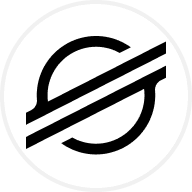ISO 20022: Transforming Global Payments and Unlocking Blockchain Integration
Understanding ISO 20022 and Its Role in Global Payments
ISO 20022 is a global financial messaging standard designed to revolutionize cross-border payments by enhancing interoperability, security, and efficiency. This standard is becoming the backbone of modern financial systems, enabling data-rich payments that provide detailed transaction information. Such advancements improve compliance with anti-money laundering (AML) and countering-the-financing-of-terrorism (CFT) regulations, making financial systems more secure and transparent.
Over 70 countries have already adopted ISO 20022, signaling a global shift toward harmonized payment systems. The U.S. Federal Reserve’s Fedwire system is also transitioning to ISO 20022, with full implementation expected by July 2025. This widespread adoption underscores the growing importance of the standard in shaping the future of global finance.
Cryptocurrencies Compliant with ISO 20022
Several cryptocurrencies are uniquely positioned to integrate seamlessly into traditional financial systems due to their compliance with ISO 20022. These include:
XRP: Renowned for its real-time, low-cost cross-border transactions, XRP is a natural fit for ISO 20022. Its partnerships with financial institutions further solidify its alignment with the standard.
Stellar (XLM): Stellar’s fintech-friendly platform, stablecoin issuance capabilities, and low-fee payment solutions make it a strong contender for ISO 20022 adoption.
Cardano (ADA): With a focus on scalability and security, Cardano is well-suited for integration into ISO 20022-compliant systems.
Algorand (ALGO): Algorand’s high-speed blockchain and institutional use cases align with the goals of ISO 20022.
Quant (QNT): Quant’s Overledger technology facilitates interoperability between blockchains and traditional financial systems, making it ISO 20022-ready.
Hedera (HBAR): Hedera’s enterprise-grade blockchain and focus on secure, scalable solutions position it as a key player in ISO 20022 adoption.
XRP’s Role in Cross-Border Payments
XRP stands out as a leader in cross-border payments, primarily due to its On-Demand Liquidity (ODL) product. ODL leverages XRP to facilitate instant, low-cost transactions, making it an ideal solution for financial institutions adopting ISO 20022. Its focus on real-time payments aligns perfectly with the standard’s objectives, positioning XRP as a cornerstone in the future of global payments.
Stellar’s Focus on Stablecoin Issuance and Fintech Adoption
Stellar (XLM) has carved a niche in the fintech space by enabling stablecoin issuance and providing low-fee payment solutions. These features make it a strong candidate for ISO 20022 adoption, particularly in regions where stablecoins are gaining traction as tools for financial inclusion. Stellar’s focus on bridging the gap between traditional finance and blockchain technology further enhances its appeal.
Impact on Traditional Financial Systems and Blockchain Integration
The adoption of ISO 20022 is expected to bridge the gap between traditional financial systems and blockchain technology. By enabling seamless integration, compliant cryptocurrencies like XRP and Stellar could gain approval from centralized banks, facilitating cross-border crypto payments through established financial networks.
This transition is seen as a gateway to blockchain-powered finance, where cryptocurrencies play a pivotal role in the future of global payments. Institutional interest in ISO-compliant cryptocurrencies is likely to grow, potentially increasing their value and usage.
Global Adoption of ISO 20022
The global adoption of ISO 20022 is accelerating, with over 70 countries already implementing the standard. This widespread adoption highlights the growing recognition of ISO 20022 as a cornerstone of modern financial systems. The coexistence of SWIFT and ISO 20022 until November 2025 allows financial institutions to migrate at their own pace, ensuring smoother transitions.
Benefits of ISO 20022 for Compliance and Efficiency
ISO 20022 offers several transformative benefits for the financial ecosystem:
Enhanced Compliance: Data-rich payments improve adherence to AML and CFT regulations, reducing the risk of financial crimes.
Fraud Prevention: Detailed transaction data helps identify and mitigate fraudulent activities, enhancing security.
Operational Efficiency: Streamlined processes reduce costs and improve transaction speed, benefiting both financial institutions and end-users.
Challenges and Costs of ISO 20022 Implementation
While the benefits of ISO 20022 are significant, the transition presents challenges. Financial institutions must invest in technology upgrades, infrastructure improvements, and workforce training to ensure successful implementation. These costs can be substantial, particularly for smaller organizations, potentially delaying their adoption timelines.
The Role of ISO 20022 in the Quantum Financial System (QFS)
ISO 20022 is expected to play a pivotal role in the Quantum Financial System (QFS), a futuristic concept envisioning a blockchain-powered global financial network. By enabling seamless integration between traditional systems and blockchain technology, ISO 20022 lays the foundation for a more efficient, secure, and transparent financial ecosystem.
Conclusion
ISO 20022 is more than just a messaging standard; it’s a transformative force in global finance. By bridging the gap between traditional systems and blockchain technology, it paves the way for a future where cryptocurrencies like XRP and Stellar play central roles in payments. As adoption continues to grow, ISO 20022 is set to redefine the financial landscape, unlocking new opportunities for innovation, efficiency, and financial inclusion.
© 2025 OKX. Acest articol poate fi reprodus sau distribuit în întregime sau pot fi folosite extrase ale acestui articol de maximum 100 de cuvinte, cu condiția ca respectiva utilizare să nu fie comercială. Orice reproducere sau distribuire a întregului articol trebuie, de asemenea, să precizeze în mod vizibil: "Acest articol este © 2025 OKX și este utilizat cu permisiune." Extrasele permise trebuie să citeze numele articolului și să includă atribuirea, de exemplu „Numele articolului, [numele autorului, dacă este cazul], © 2025 OKX.” Unele conținuturi pot fi generate sau asistate de instrumente de inteligență artificială (AI). Nu este permisă nicio lucrare derivată sau alte utilizări ale acestui articol.


